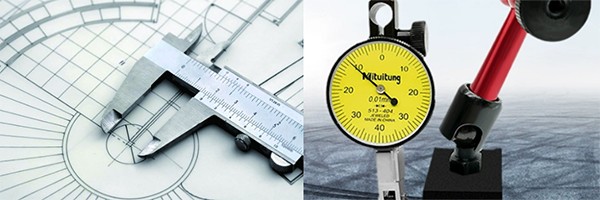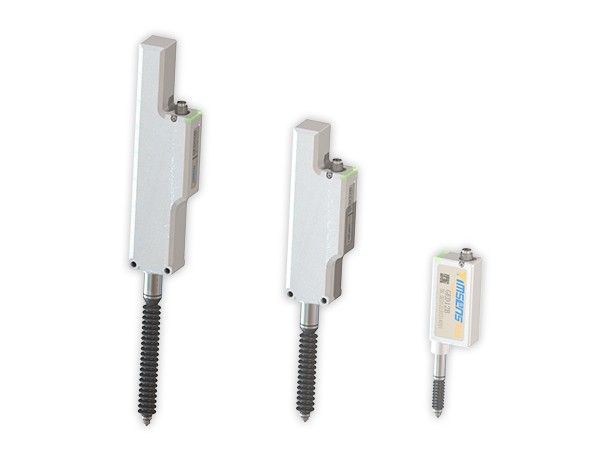Introduction to Measurement Equipment
Measurement equipment, including linear measurement equipment and rotation measurement equipment, plays a vital role in industrial processes where accuracy and precision are essential. These tools help maintain quality control, optimize machinery, and ensure the safety of operations. Linear measurement equipment is used for tracking distances along straight paths, while rotation measurement equipment monitors the angular movement of rotating objects.

Understanding Linear Measurement Equipment
How Linear Measurement Works
Linear measurement is the process of determining the distance or length between two points along a straight line. In industry, this often includes tracking the movement of components, monitoring equipment dimensions, and aligning materials precisely.
Types of Linear Measurement Devices
- Linear Encoders: Provide high accuracy in automated machinery.
- Laser Measurement Tools: Ideal for longer distances and high precision.
- Calipers and Micrometers: Basic tools used for smaller, high-precision measurements.
Understanding Rotation Measurement Equipment
How Rotation Angle Measurement Works
Rotation measurement involves tracking the angular displacement of objects. This equipment is crucial in applications where rotation, tilt, or angular accuracy is needed.
Types of Rotation Measurement Devices
- Rotary Encoders: Convert rotational positions into digital signals.
- Gyroscopes: Track rotation dynamically, widely used in navigation.
- Inclinometers: Measure angles relative to gravity, suitable for positioning systems.
Key Applications in Manufacturing
In manufacturing, both linear and rotation measurement equipment are essential for ensuring precision in product assembly, quality control, and equipment alignment.
- Linear Measurement: Used to verify component sizes, track movement in conveyor systems, and ensure accurate cutting or stamping of materials.
Rotation Measurement: Important for CNC machinery to control angles and rotational speed, maintaining alignment in robotic arms, and ensuring high-speed machinery operates safely.

Use in Construction
The construction industry relies on precise measurement to ensure safety, quality, and alignment in building structures.
- Linear Measurement: Laser distance meters and linear encoders are used for surveying land, aligning steel frameworks, and checking the dimensions of structural components.
- Rotation Measurement: Inclinometers and rotary encoders help in assessing the tilt of cranes, positioning materials, and aligning structures for stability, especially in high-rise construction.
Automotive Industry Applications
Both types of measurement equipment are critical in vehicle production, testing, and maintenance.
- Linear Measurement: Essential in engine parts fabrication, suspension system alignment, and quality checks on assembly lines.
- Rotation Measurement: Rotary encoders and gyroscopes are used for testing engine rotation, ensuring proper alignment in steering and braking systems, and analyzing drivetrain performance.
Aerospace and Defense Applications
High accuracy in measurement is mandatory in the aerospace and defense sectors for navigation, structural integrity, and mission-critical tasks.
- Linear Measurement: Used for inspecting airframe dimensions, positioning parts during assembly, and conducting stress tests on materials.
Rotation Measurement: Gyroscopes and rotary encoders play a crucial role in navigation, flight control, and monitoring satellite alignment.
Robotics and Automation
In the fast-evolving field of robotics, both linear and rotation measurements are critical for accurate movement and orientation.
- Linear Measurement: Allows robots to measure and track movement along conveyor belts or within confined spaces.
- Rotation Measurement: Rotary encoders and inclinometers enable robotic arms to achieve precise orientation and movement paths, essential for tasks like welding, assembly, and painting.
Medical and Healthcare Equipment
Precision measurement equipment is essential in the healthcare industry, especially in medical devices and robotic surgery.
- Linear Measurement: Used in imaging equipment, like CT scanners, for accurate positioning, and in robotic surgery systems to ensure precise tool movement.
- Rotation Measurement: Important in devices that require rotational control, such as MRI machines, robotic arms, and patient monitoring systems.
Telecommunications and Infrastructure
The telecommunications industry uses measurement equipment for positioning and alignment of infrastructure.
- Linear Measurement: Vital in constructing and aligning towers, underground cables, and fiber optic systems.
- Rotation Measurement: In antenna systems, rotary encoders and inclinometers ensure precise alignment to maintain signal quality and directional accuracy.
Oil and Gas Industry
The oil and gas sector depends on accurate measurement for pipeline monitoring, drilling, and equipment maintenance.
- Linear Measurement: Used in pipeline inspections, drilling alignment, and monitoring equipment movement.
- Rotation Measurement: Essential for drilling equipment to track rotation speeds and angles, and for maintaining pump and valve alignment to prevent equipment failure.
Energy and Renewable Sector
In the renewable energy sector, measurement equipment is used in the operation of wind turbines, solar panel alignment, and structural safety checks.
- Linear Measurement: Supports the accurate positioning of solar panels for optimal sunlight exposure and alignment in hydroelectric systems.
- Rotation Measurement: Used in tracking the rotation of wind turbine blades, adjusting solar panel angles, and monitoring structural integrity.
How to Choose the Right Measurement Solution
Selecting the correct measurement equipment depends on several factors:
- Accuracy Requirements: High-precision applications may require digital or laser tools.
- Environment: Industrial or outdoor applications need robust equipment that can handle environmental challenges.
- Budget: High-precision equipment can be more expensive, so consider the specific requirements of your application.
Importance of Maintenance and Calibration
Regular maintenance and calibration are critical for ensuring measurement accuracy and device longevity. Routine cleaning, calibration checks, and avoiding overuse can help extend the lifespan of measurement equipment and prevent costly errors in operations.
Conclusion
From manufacturing and automotive to healthcare and renewable energy, industries worldwide depend on linear measurement equipment and rotation measurement equipment to maintain accuracy, quality, and safety in operations. By selecting the right tools and ensuring they are well-maintained, industries can optimize their processes and support continuous innovation in a competitive market.
INQUIRY NOW

